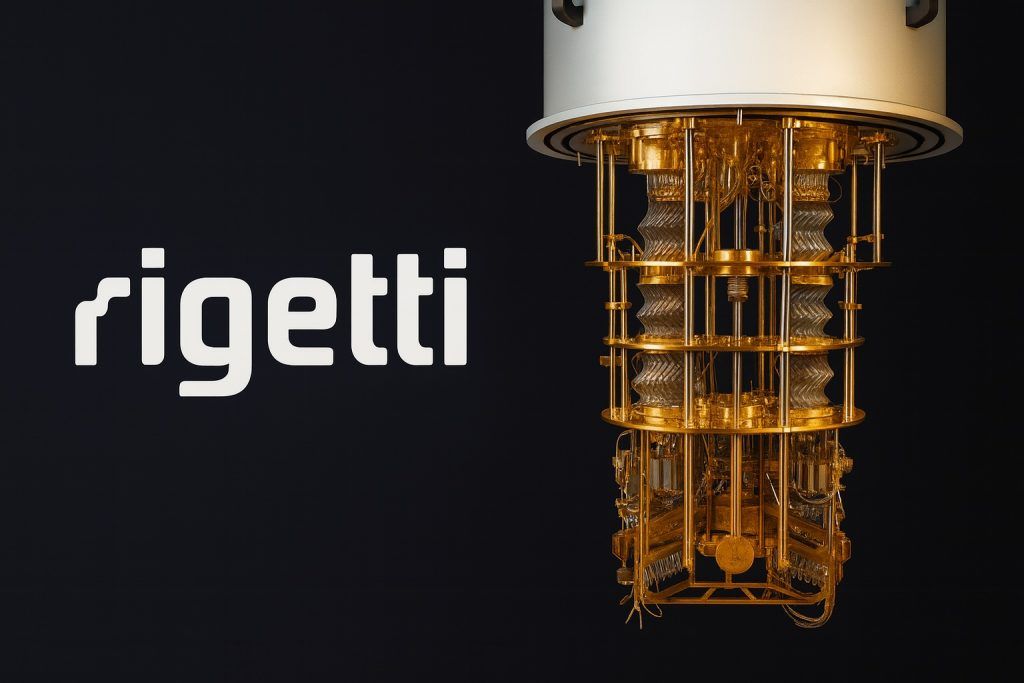- Stock Spike: DFLI shares jumped roughly 35–42% in pre-market trading on Oct. 15, 2025, after news of a key battery-patent allowance [1] [2]. The stock had earlier rallied 11% on Sept. 25 amid a broad “lithium” market surge [3]. Despite these gains, Dragonfly’s stock is still off about 44% year-to-date [4].
- Recent Results: Dragonfly reported preliminary Q3 net sales of ~$16.0 million (up 26% YoY) and narrowed its adjusted EBITDA loss, both beating guidance [5]. The company is hosting an earnings webcast for Q3 results on Nov. 14.
- Tech & Partnerships: The USPTO granted a Notice of Allowance on Oct. 15 for Dragonfly’s IntelLigence battery communication technology [6], allowing its Battle Born® batteries to share data wirelessly via a mesh network. On Oct. 9, Dragonfly also published a joint whitepaper with truckmaker PACCAR (Nasdaq: PCAR) on lithium-powered idle-reduction for commercial fleets [7]. Meanwhile, Dragonfly’s batteries were chosen as standard for Ember RV’s 2026 Overland series, highlighting ongoing OEM traction [8].
- Capital Raise: On Oct. 6 the company announced a 20 million-share offering at $1.25 each (~$26.7M) for working capital and tech investment [9]. Shares fell ~28% after the announcement [10]. The new funds will help repay debt and expand manufacturing, but will dilute existing shareholders.
- Analyst Outlook: Two analysts’ 12-month price targets average only ~$1.00–1.20 [11] [12]. Notably, Roth MKM’s Chip Moore reiterated a Buy rating with a $3.00 target, citing long-term growth in RV and heavy-vehicle markets [13]. However, Dragonfly still carries heavy losses (net margin ~–56%) and debt [14], making it a high-risk bet despite its technology edge.
- Market Context: Dragonfly operates in the fast-growing EV and battery-storage sector, but as a micro-cap it faces liquidity and compliance challenges. Nasdaq issued a June 2025 delisting notice (market value < $35M) [15]; management has proposed a reverse split (1-for-2 up to 1-for-50) to regain compliance by Nov 2025 [16].
Dragonfly Energy Holdings (DFLI) – US-listed maker of Battle Born® lithium batteries – saw its stock surge on Oct. 15, 2025. The company’s new patent for wireless battery communication and a solid Q3 sales beat have energized investors. (Image: Dragonfly Energy logo)
Dragonfly Energy (Nasdaq: DFLI) grabbed headlines in mid-October 2025 when the U.S. Patent and Trademark Office approved a crucial patent for its IntelLigence® battery communication system [17] [18]. In early trading on Oct. 15, the stock spiked more than 35%, on top of heavy volumes, reflecting the patent news [19] [20]. This sudden rally follows a volatile week: DFLI jumped ~11.4% on Sept. 25 (amid a surge in lithium stocks) [21], then drifted before leaping again on the patent announcement. By the close of Oct. 14 the stock was around $1.50, up from roughly $1.20–$1.30 earlier in the week, but still well below its $5+ highs in 2024. (Dragonfly’s retail-investor sentiment has swung from high bearish in early October to bullish after the patent news [22].)
Patent Breakthrough and CEO Comments. Dragonfly’s patent covers a “mesh network” of lithium batteries and wireless modules that can share operating data and warning codes even when one battery is offline [23]. This proprietary feature is tied to the company’s Battle Born HUB hardware. “We believe this patent strengthens our Dragonfly IntelLigence platform and represents a major step forward in connected battery technology,” said CEO Dr. Denis Phares [24]. Phares noted that enabling batteries to talk to one another creates “a more intelligent, adaptive, and efficient energy ecosystem” that can optimize performance and safety [25]. Industry analysts view this as a valuable patent in a competitive field of battery makers.
Earnings Update and OEM Traction. On Oct. 13 Dragonfly issued a preliminary earnings release, projecting Q3 net sales of ~$16.0 million (up 26% from a year ago) and an adjusted EBITDA loss of about $2.2 million [26]. Both figures beat Wall Street expectations ($15.9M sales and –$2.7M loss guidance) [27]. Management attributed the better-than-expected results to improved OEM orders and cost controls. Dragonfly noted strong growth in its factory-direct and OEM channels. For example, the company recently announced that its lithium battery systems will be standard equipment on Ember RV’s 2026 Overland travel trailer models [28] – a vote of confidence in its products. Earlier this year Dragonfly also signed an OEM development deal with trucking firms and demonstrated Battle Born systems at commercial fleet shows, highlighting broad adoption in RV and trucking sectors.
Product and Partnership Highlights. In addition to the patent, Dragonfly has been busy with strategic partnerships. On Oct. 9 the company and global truck-maker PACCAR (Peterbilt and Kenworth) released a joint whitepaper on reducing idling time with lithium power packs [29]. The report shows how Dragonfly’s lithium-ion idle-reduction systems (like the Battle Born DualFlow Power Pack) can cut fuel use and engine wear for long-haul trucks. Wade Seaburg, Dragonfly’s Chief Commercial Officer, said the collaboration “validates the performance of our LiFePO₄-powered solutions” in improving fleet efficiency and driver comfort [30]. Such partnerships reinforce Dragonfly’s positioning in the burgeoning EV and transportation electrification market.
Another ongoing initiative is Dragonfly’s dry-electrode cell manufacturing (in Colorado) and R&D into next-gen battery chemistries. While solid-state cells are the ultimate goal, in the near term the company focuses on high-performance LiFePO₄ packs for RVs, marine, off-grid, and trucking customers [31] [32]. This broad product mix — and the ability to license its cell technology (e.g. to Stryten Energy) — could expand revenue over time.
Financing and Dilution. Like many small-cap tech firms, Dragonfly has raised equity to fund growth. On Oct. 6 it launched a public offering of 20 million new shares at $1.25 apiece (about $26.7M gross proceeds) [33]. The funds are earmarked for working capital, R&D, and debt repayment. While the infusion strengthens the balance sheet, it also caused shareholder pain: the stock slid ~28% immediately after the offering was announced [34]. In trading this week (Oct 12–15) DFLI closed below $1.25 as the market absorbed the news and weighed upcoming dilution. Industry analysts note that this raises the share count significantly, but management argues it is necessary to commercialize its tech and scale manufacturing.
Analyst Commentary and Price Targets. Wall Street analysts have mixed views on DFLI. TipRanks shows 1 recent Buy and 13 Hold ratings, with an average 12-month target around $1.00–$1.20 [35] [36]. This implies modest upside from current levels. Chip Moore of Roth MKM is among the bulls: in Dec. 2024 he reiterated a Buy rating with a $3.00 price target [37], calling Dragonfly a “dark horse” in the industry with big potential as EV and RV markets grow. In commentary, Moore highlighted Dragonfly’s “significant growth” opportunities in new vehicle markets, and maintained confidence in its long-term outlook. By contrast, a StocksToTrade analysis warns of Dragonfly’s weak financials: it noted DFLI’s deep losses (net margin –55.8%, EBITDA margin –39.3%) and tight liquidity (quick ratio ~0.3) [38]. That piece called DFLI’s current position “precarious,” suggesting a cautious trading stance. Indeed, the Street is watching whether Dragonfly can turn profitable — aided by rising sales and patents — or if capital constraints will remain a drag.
Sector and Market Outlook. Dragonfly sits in the middle of a surging battery/EV sector. Global EV sales and stationary storage deployments are growing rapidly due to decarbonization efforts and new regulations. U.S. incentives (like the Inflation Reduction Act) and major investment plans have spurred demand for lithium batteries in electric trucks, RVs and grid storage. In this context, Dragonfly’s all-American production and lithium tech could be attractive. However, it also competes with larger players and must prove scale. The broader battery market (especially safe, non-toxic LiFePO₄ cells) is expected to expand strongly over the next 5–10 years, which could benefit Dragonfly if it captures a slice of that growth.
On the infrastructure side, public EV charging networks and energy storage projects are expanding: for instance, over 1.3 million new public chargers were added worldwide in 2024 [39]. While Dragonfly is not a charger maker, demand for its storage packs is indirectly linked to this ecosystem. Meanwhile, major OEMs (auto and trucking) are moving to lithium solutions for idle reduction, auxiliary power, and cabin electrification. Dragonfly’s recent PACCAR tie-up and Ember RV adoption suggest it is aligning with these trends.
Stock Outlook. The patent approval and Q3 beat have given DFLI a near-term boost, but investors remain split on the company’s runway. Some analysts argue that Dragonfly’s technology moat and domestic manufacturing will lead to profitability as sales scale. Others point to the huge losses and need for ongoing financing as risks that could keep the stock volatile. Near-term catalysts include the actual Q3 earnings release (mid-November) and the vote on the reverse split at the Oct. 15 annual meeting. Longer-term, watch whether Dragonfly can convert its IP edge and partnerships into consistent revenue growth. If EV and battery markets continue climbing, Dragonfly could ride that wave – but as one adviser put it, “preparation is half the trade” [40]. Investors should monitor margins, cash burn, and Nasdaq compliance, even as they track this tiny battery stock that is now charging up the market.
Sources: Company press releases [41] [42] [43]; market news and analysis [44] [45] [46] [47] [48]; financial data and filings [49] [50].
References
1. au.investing.com, 2. stocktwits.com, 3. ts2.tech, 4. stocktwits.com, 5. www.globenewswire.com, 6. www.globenewswire.com, 7. www.globenewswire.com, 8. ts2.tech, 9. www.stockinsights.ai, 10. stockstotrade.com, 11. www.investing.com, 12. fintel.io, 13. www.tipranks.com, 14. stockstotrade.com, 15. www.stockinsights.ai, 16. ts2.tech, 17. www.globenewswire.com, 18. au.investing.com, 19. au.investing.com, 20. stocktwits.com, 21. ts2.tech, 22. stocktwits.com, 23. www.globenewswire.com, 24. au.investing.com, 25. au.investing.com, 26. www.globenewswire.com, 27. www.globenewswire.com, 28. ts2.tech, 29. www.globenewswire.com, 30. www.globenewswire.com, 31. www.globenewswire.com, 32. www.globenewswire.com, 33. www.stockinsights.ai, 34. stockstotrade.com, 35. www.investing.com, 36. fintel.io, 37. www.tipranks.com, 38. stockstotrade.com, 39. www.iea.org, 40. stockstotrade.com, 41. www.globenewswire.com, 42. www.globenewswire.com, 43. www.globenewswire.com, 44. au.investing.com, 45. stocktwits.com, 46. ts2.tech, 47. www.tipranks.com, 48. stockstotrade.com, 49. www.stockinsights.ai, 50. www.stockinsights.ai










